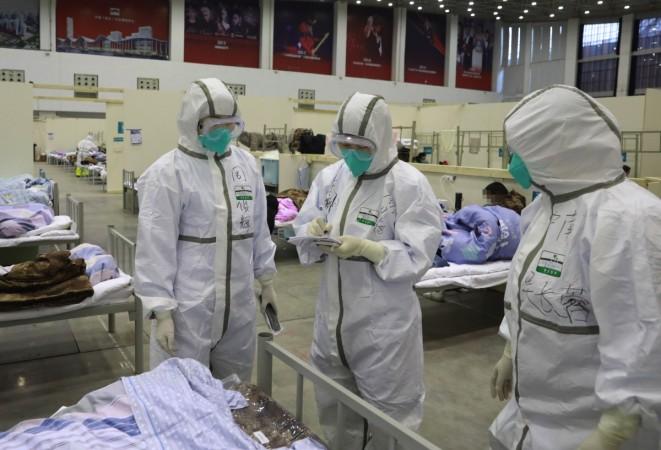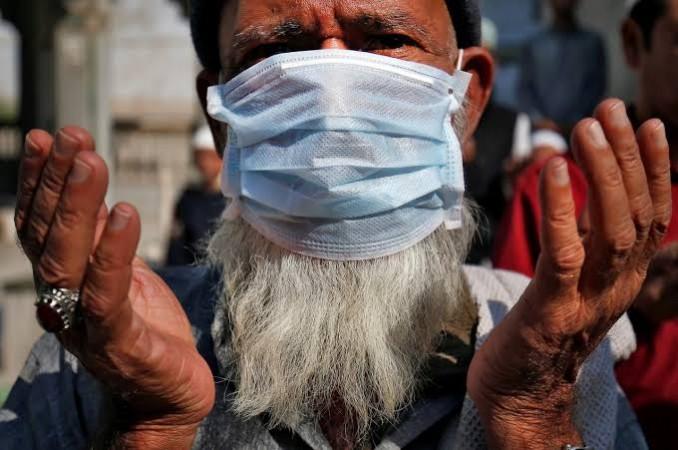
Chinese health authority on Tuesday said it received reports of 1,886 new confirmed cases of novel coronavirus infection and 98 deaths on Monday from 31 provincial-level regions and the Xinjiang Production and Construction Corps.
Among the deaths, 93 were in Hubei Province, three in Henan, and one in Hebei and Hunan respectively, according to the National Health Commission, the Xinhua news agency reported.
72,436 cases reported in mainland China

A total of 72,436 cases have been reported in mainland China as of Tuesday, although a spike in recent cases was due to a broader definition in the hardest-hit region based on doctors' diagnoses before laboratory tests were completed.
Monday's report from the Chinese Center for Disease Control and Prevention gives the World Health Organization a "clearer picture of the outbreak, how it's developing and where it's headed," WHO's director-general said at a news conference.
"It's too early to tell if this reported decline will continue. Every scenario is still on the table," Tedros Adhanom Ghebreyesus said.
China may postpone its annual congress in March

China may postpone its annual congress in March, its biggest political meeting of the year, to avoid travel while the disease is still spreading. The standing committee for the National People's Congress will meet February 24 to deliberate on a postponement of the meeting due to start March 5.
The new disease, called COVID-19, first emerged in December in Wuhan, the capital of central China's Hubei province, and has spread to more than two dozen other countries.
The new study reports on 44,672 cases confirmed in China as of February 11. The virus caused severe symptoms such as pneumonia in 14% of them and critical illness in 5 per cent.
The fatality rate for these confirmed cases is 2.3 per cent - 2.8 per cent for males versus 1.7 per cent for females.
That's lower than for SARS and MERS, which are caused by two similar viruses, but COVID-19 ultimately could prove more deadly if it spreads to far more people than the others did. Ordinary flu has a fatality rate of 0.1 per cent yet kills hundreds of thousands because it infects millions each year.
The COVID-19 cases include relatively few children, and the risk of death rises with age. It's higher among those with other health problems - more than 10% for those with heart disease, for example, and higher among those in Hubei province versus elsewhere in China.
Cases seem to have been declining since February 1, but that could change as people return to work and school after the Chinese holidays, the report warns. Beijing has sought to forestall that by extending the Lunar New Year holiday, imposing tight travel restrictions and demanding 14 days off self-quarantine for anyone returning from outside their immediate region.
Hundreds of cases have been confirmed outside China, with a significant number on a cruise ship quarantined at a port near Tokyo.
Japanese officials on Monday confirmed 99 more people were infected on the Diamond Princess, bringing the total to 454. The Health Ministry said it has now tested 1,723 people on the ship, which had about 3,700 passengers and crew aboard. Outside China, the ship has the largest number of cases of COVID-19.
518 confirmed cases in Japan

Japan has 518 confirmed cases, including the 454 from the cruise ship, and one death from the virus.
The U.S. evacuated 328 American passengers, with most of them now in a 14-day quarantine at military bases in California and Texas. Fourteen of them have the virus and were taken to hospitals in California and Nebraska.
Any quarantined passengers who shows symptoms of the virus will be taken to a hospital off the base "for containment and specialized care," according to a statement from Centers for Disease Control and Prevention spokesman Scott Pauley. The CDC rather than the Department of Defense is responsible for all parts of the quarantine operation.

















